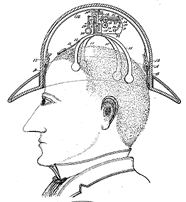If Peter hadn't arranged the tweeters on axis previously, and has toed out while moving the speakers closer together, then treble response could be similar now as previously. Bigger differences may be expected in the diffuseness of images, and room acoustics. It's no surprise to me that more ambient recording cues such as hall reverb are now audible in the absence of the 'wall tampons' or panels that were removed. I've tried that same experiment and no longer like much room treatment except dead center behind the speakers. I think the room full of furniture is enough in my case as in Peter's. I'm going to try a bit of toe out eventually, too. I'm currently sitting on axis and like the sound, though. It's not pinpoint, but it's not life-like diffuse either. I caught a guitar, sax duo a few weeks ago on the beach and remember thinking "that sax just sounds ginormous compared to my system at home.". I'm not in 100% agreement that toe out doesn't add coloration of its own, however. I'm a bit more in the "it's a function of the recording" camp with regards to imaging characteristics. Toeing out a set of speakers designed to be (and measured) on-axis in order to change the result based on personal preference is certainly anyone's prerogative. But I do think there are generally side effects. Off axis response deviation just being one.
Brian you seem to have experienced similar things with your system. I found that it was not just a simple matter of rotating the speakers outward. I had to also experiment with moving them forward or backwards and more towards each other or further apart.
Good sound depends on a good interaction between the room and the speakers. Managing the energy resulting from that interaction is important. I found it quite difficult to find the best location for the speakers when trying to do it with zero toe in. I had to be very persistent, patient, and methodical.
I look forward to reading about your impressions once you experiment more with toeing your speakers outward.


